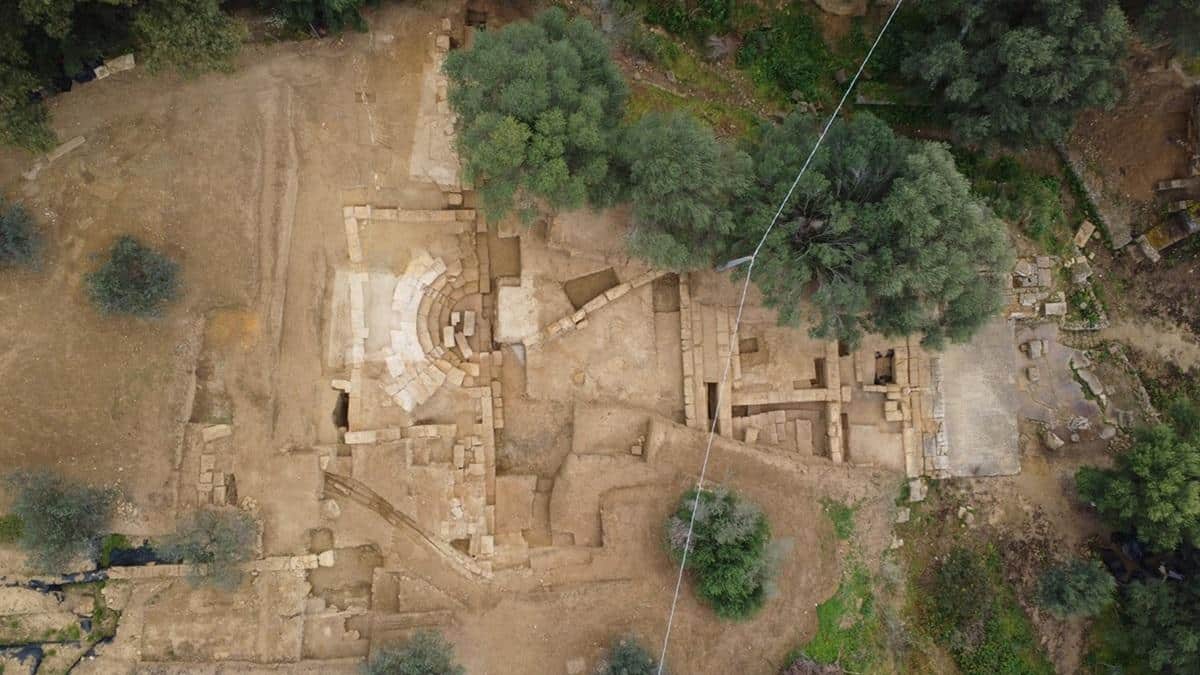

A newly completed excavation at an ancient gymnasium in Agrigento, Sicily, the modern name for the ancient Greek city of Akragas (Greek: Ἀκράγας), has revealed new finds: a rare roofed auditorium, a spacious hall, and a partially preserved inscription, shedding light on how education and athletics were intertwined in one of Magna Graecia’s most thriving cities
The site in the Valley of the Temples was partially excavated between the 1950s and 2005, during which archaeologists uncovered parts of a racetrack and a pool. However, many questions about the gymnasium’s design, use, and historical context remained unanswered.
Since 2020, a collaborative project led by the Freie Universität Berlin, the Politecnico di Bari, and the Parco Archeologico e Paesaggistico della Valle dei Templi has worked to complete the picture.
Following geophysical surveys, three campaigns conducted between 2022 and 2024 focused on the area north of the ancient pool and revealed a palaestra—an open training courtyard—measuring at least 62 meters (203 feet) by 35 meters (approximately 115 feet) and arranged across two terraces.
Roof tiles stamped with the abbreviation “ΓΥΜ” (gymnasio), the Greek word for gymnasium (Greek: ΓΥΜΝΑΣΙΟ), confirmed the identity of the structure.
The most recent excavation campaign, which was conducted from February 24 to April 1, 2025, uncovered these remarkable discoveries.
Archaeologists uncovered a large rectangular room measuring 23 meters (75 and a half feet) by 11 meters (36 feet) on the lower terrace of the palaestra. The room featured an earthen floor and benches along the walls and was connected to a roofed auditorium through a wide doorway in its north wall.
The auditorium, built into the natural slope between terraces, measures 12 meters (39 feet) by 7 meters (23 feet) and contains seven to eight curved seating rows made from local calcarenite. These can accommodate around 150 to 200 people.

Two narrow staircases provided access to the stepped seating. The orchestra, the flat area in front of the seating where performances or speeches would occur, was paved with a simple cement floor.
Scholars believe the auditorium was part of the original construction, dating to the 2nd century BC. While similar roofed auditoriums existed in Hellenistic council buildings, such as bouleuteria, this is the first known example of a gymnasium from this era.
Experts suggest it was used for lectures, rhetorical contests, and other intellectual events, reflecting the gymnasium’s dual role in physical and educational training.
Two large stone blocks, measuring 1.5 meters (5 feet) by 0.5 meters (1.64 feet) by 0.5 meters (1.64 feet) each, were discovered in the orchestra. One block preserved traces of white plaster and red lettering.
The inscription, though damaged, names a gymnasiarch—a gymnasium official—who funded roof repairs and dedicated the work to Hermes and Heracles, traditional patrons of gymnasia.
Archaeologists believe the inscription originally spanned at least four blocks and may date to the reign of Emperor Augustus (31 BC-AD 14), based on stylistic similarities to other inscribed benches in earlier campaigns. These blocks were likely reused in a later installation before the gymnasium was partially dismantled and buried beneath a destruction layer in the early 3rd century AD.
Few inscriptions from ancient Akragas have survived, making this one a rare and valuable addition to the historical record.
The large room next to the auditorium, featuring benches and an earth floor, may have served as an “apodyterium,” or changing room. However, its placement suggests it likely hosted educational activities or discussions. Whether the inscription refers to this room or another yet-to-be-discovered space remains unclear.
Excavations will continue in 2026. Efforts will expand to the west, north, and east of the auditorium discovered in the ancient Greek city of Agrigento.
The project has been supported by institutions such as the German Research Foundation (DFG), Erasmus+ Teaching Mobility, and multiple university partnerships, offering field school opportunities to students in both Italy and Germany.
